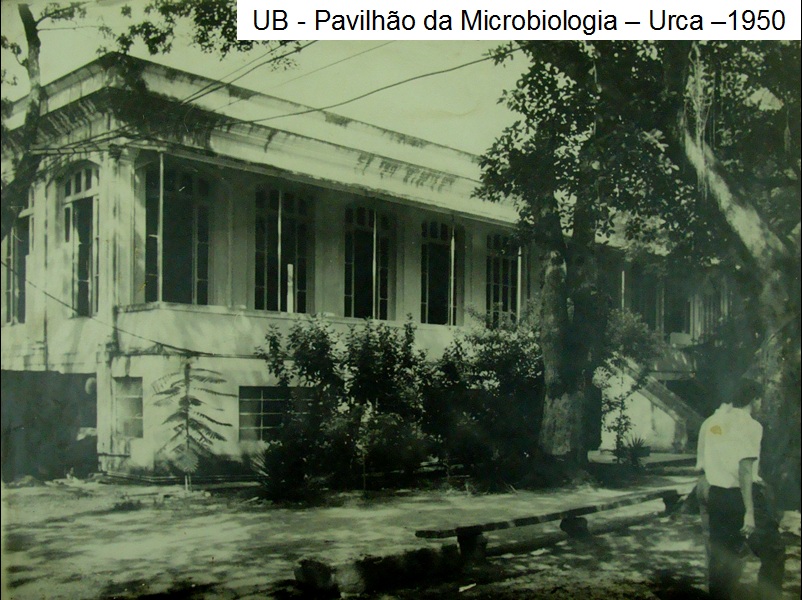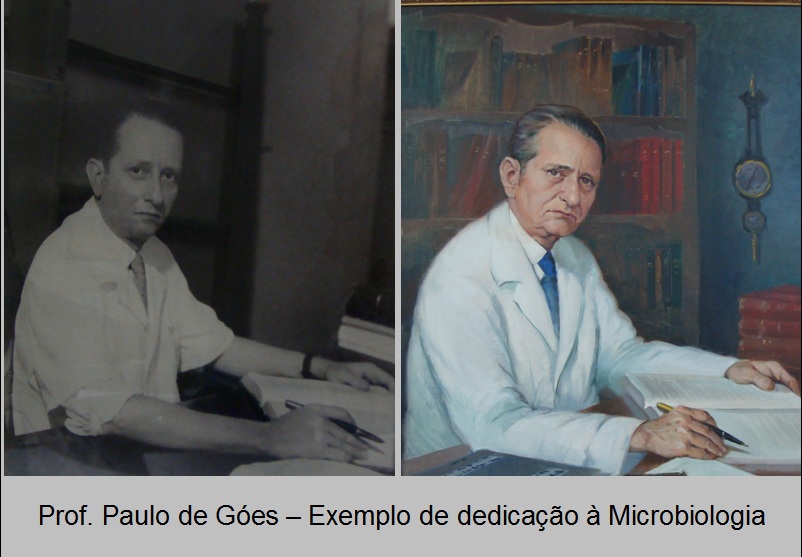 The history of teaching Microbiology in Brazil began in 1946 at the University of Brazil*. Professor Paulo de Góes founded the Institute of Microbiology and as a tribute for his work and commitment to Microbiology the Institute was later named after him.
The history of teaching Microbiology in Brazil began in 1946 at the University of Brazil*. Professor Paulo de Góes founded the Institute of Microbiology and as a tribute for his work and commitment to Microbiology the Institute was later named after him.
Paulo de Góes was a physician by training but by vocation he was a microbiologist. Upon entering as full professor of Microbiology at the Anna Nery School of Nursing, he began his career as a recognized leader in forming microbiologists in Brazil. After further academic exams, Prof. Paulo de Góes accumulated the chairs of Microbiology at the Pharmaceutical and Medical Faculties. In order to comply with his responsibilities at these institutions which included lecturing, helping students and advising teachers as well as the general organization of the courses, he gathered the three schools into one place.
In 1950, the building, which had once housed the patients of the Psychiatric Hospital Pinel in the Urca district, became the location for the Microbiology course for the students of nursing, pharmacy and medicine. After minor renovations, it was renamed the Microbiology Pavilion. It was there that the students of the three schools attended the theoretical and practical classes of Microbiology, under the coordination of Prof. Paulo de Góes. The success of teaching and research carried out at the Microbiology Pavilion attracted the attention of other professors and researchers and soon the team responsible for the chair of Microbiology at the Faculty of Dentistry joined the growing group.
At the beginning of 1951, with the aim to professionalize Microbiology on a national level the first Updating and Reviewing Course in Microbiological and Immunological Methods (CARMMI) was offered to graduates that were engaged in the field of Microbiological Sciences. The course was maintained until 1988.
The administrative work involving the four chairs needed to accommodate multiple interests, involving both the faculty and the students. The solution was to turn the Microbiology Course into an autonomous academic unit; however, this process needed to be regulated and approved by the University Council. With the encouragement and collaboration of Dona Risoleta, the wife of Paulo de Góes, the new statutes of the course were set up and the microbiology courses became known as the Institute of Microbiology (IM). As a consequence of the four different groups and their respective undergraduate courses the chairs of General Microbiology, Medical Microbiology, Immunology and Virology were created. During this period, Paulo de Goes began to dedicate himself to virology, while simultaneously looking after the growth of the unit as a whole. With funding from the American Rockefeller, Kellogg and Ford foundations, research work at IM gained new significance, largely because of the leadership of Prof. Paulo de Góes, who was also part of the World Health Organization, the Pan American Health Organization and several other international organizations. In Brazil, he was a member of the Academy of Medicine and Sciences.
In order to improve the teaching of Microbiology in Brazil, a Postgraduate lato-sensu course was created in 1953 that offered a specialization course in Microbiology and Immunology (CEMI). The 10 month course was aimed at training professors in these areas. First, candidates had to take and pass the CARMMI course. Students and teachers from other states and from Latin American countries came to study at the Institute. The course required a great effort by the students to follow the theoretical and practical work. There were weekly elimination tests and practices that included everything from washing and processing of materials to more elaborate techniques. Several generations of excellent microbiologists have graduated from this course. On returning to their original universities the professors either expanded their existing programs in Microbiology or started new courses, thus creating training, teaching and research centers in Microbiology. In 1963, the IM started teaching stricto-sensu Postgraduate courses, becoming the first institution to grant a doctorate in Brazil. At this time, the researcher Luís Rodolpho Raja Gabaglia Travassos joined the Institute, and consolidated the work at the Department of General Microbiology, bringing new concepts and contributing to the growth and recognition of research at the Institute.
In 1963, the IM started teaching stricto-sensu Postgraduate courses, becoming the first institution to grant a doctorate in Brazil. At this time, the researcher Luís Rodolpho Raja Gabaglia Travassos joined the Institute, and consolidated the work at the Department of General Microbiology, bringing new concepts and contributing to the growth and recognition of research at the Institute.
From 1950 to 1982, Prof. Paulo de Góes dedicated his life to the Institute and Microbiology in all of its scientific aspects. Paulo de Goes started young, with full vitality and aged as the IM evolved.
In 1994, the Institute of Microbiology created the first undergraduate course for a Bachelor's degree in Microbiology and Immunology in Brazil.
In 1995, the management team of the institution, in agreement with the whole faculty, all the students and employees, decided to pay homage to Prof. Góes, changing the name of the institution to Institute of Microbiology Paulo de Góes.
In 2006, in order to fit in with the job market, the course widened its scope of activities and began to run Bachelor degree courses in Biology, along the same lines as the Microbiology and Immunology courses, without, however, modifying its curriculum, which was adapt by the IMPG board in 2011.
Currently, IMPG is a fully consolidated institution that emphasizes teaching, research and extension courses within the field of Microbiology
*The University of Brazil in 1965 became known as the Federal University of Rio de Janeiro and, since 2000, it has been entitled to use both names.

















